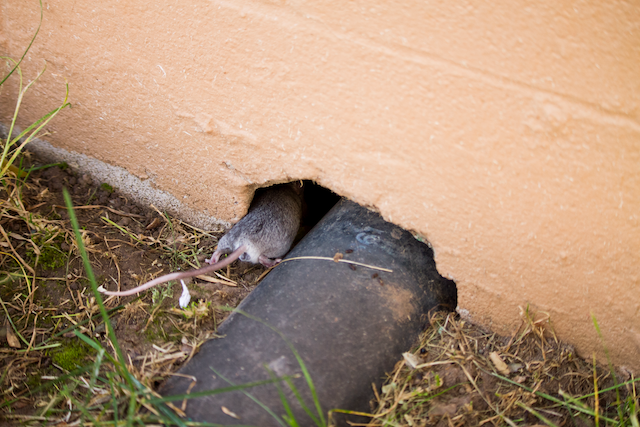Even though your home is a safe place for you, mice may find it appealing to come and play. They are small and quick, and they can get into your home through the smallest gaps. Mouse-proofing your home is a planned process that involves figuring out how they can get in and making your defences stronger. This complete step-by-step guide will help you seal the holes and keep those pesky mice away.
1. Find Entry Points That Are Vulnerable:
Start your mouse-proofing task by finding places where mice could get in. Mice can get in through holes, cracks, and gaps in walls, doors, windows, and the base. You should carefully check both the inside and outside of your house to find weak spots.
2. Seal Gaps and Cracks: Once you know where the pests are getting in, you need to make sure they can’t get back in. To fill in cracks and holes, use weatherproof sealants, caulk, or expanding foam. Pay close attention to places where different types of building materials meet, as these are often where weak spots form.
3. Make doors and windows stronger: Mice often get in through doors and windows. To get rid of the space between the door and the floor, put in door sweeper. Fix or repair window screens that are broken, and use weather stripping to close off any gaps around doors and windows. Fortified entrances are the first step in creating a safe barrier.
4. Put covers over vents. Vents are necessary for air flow, but mice can use them to get in. Put up mesh screens or vent covers that are resistant to rodents to keep air flowing properly and keep mice out. Also, chimneys, roof vents, and exit holes need to be kept safe.
5. Make sure utility openings are safe. Check utility openings, like those around pipes and wires, for gaps. Mice can get into your home through these holes, so cover them with steel wool or another suitable material.
6. Check the integrity of the base. The foundation is a key part of keeping mice out. Check the base for holes or cracks and fix them right away. A strong base is your first line of defence against mice getting in.
7. Use metal screening: Place metal screening over dryer vents and other holes for air flow that could be harmed. Mice can chew through soft materials, so choosing metal adds an extra layer of defence.
8. Set up humane traps: Mouse-proofing is mostly about keeping mice out, but it’s always good to be ready. Put down traps that are safe for people and animals where mice are likely to go. If mice get through your defences, these traps can help catch them so you can get rid of them without hurting them.
9. Regular Maintenance Checks: Keeping mice out isn’t a one-time job; it needs to be done on a regular basis. Make sure that seals, weather stripping, and other safety measures stay in place by scheduling regular checks. Possible breaches can be avoided by making fixes on time.
10. Get Professional Help: If you’re not sure or are worried about how well your mouse-proofing efforts are working, you might want to get professional help. Professionals who deal with pest control know how to do thorough checks and can add extra support where it’s needed.
Doing things like mouse-proofing your home is a sensible way to keep pests out. By following these easy steps, you can make your home’s entrances stronger and make it much harder for mice to get in. Always keep in mind that a safe home is a peaceful home, free from the noise and mess that rodents can cause.
